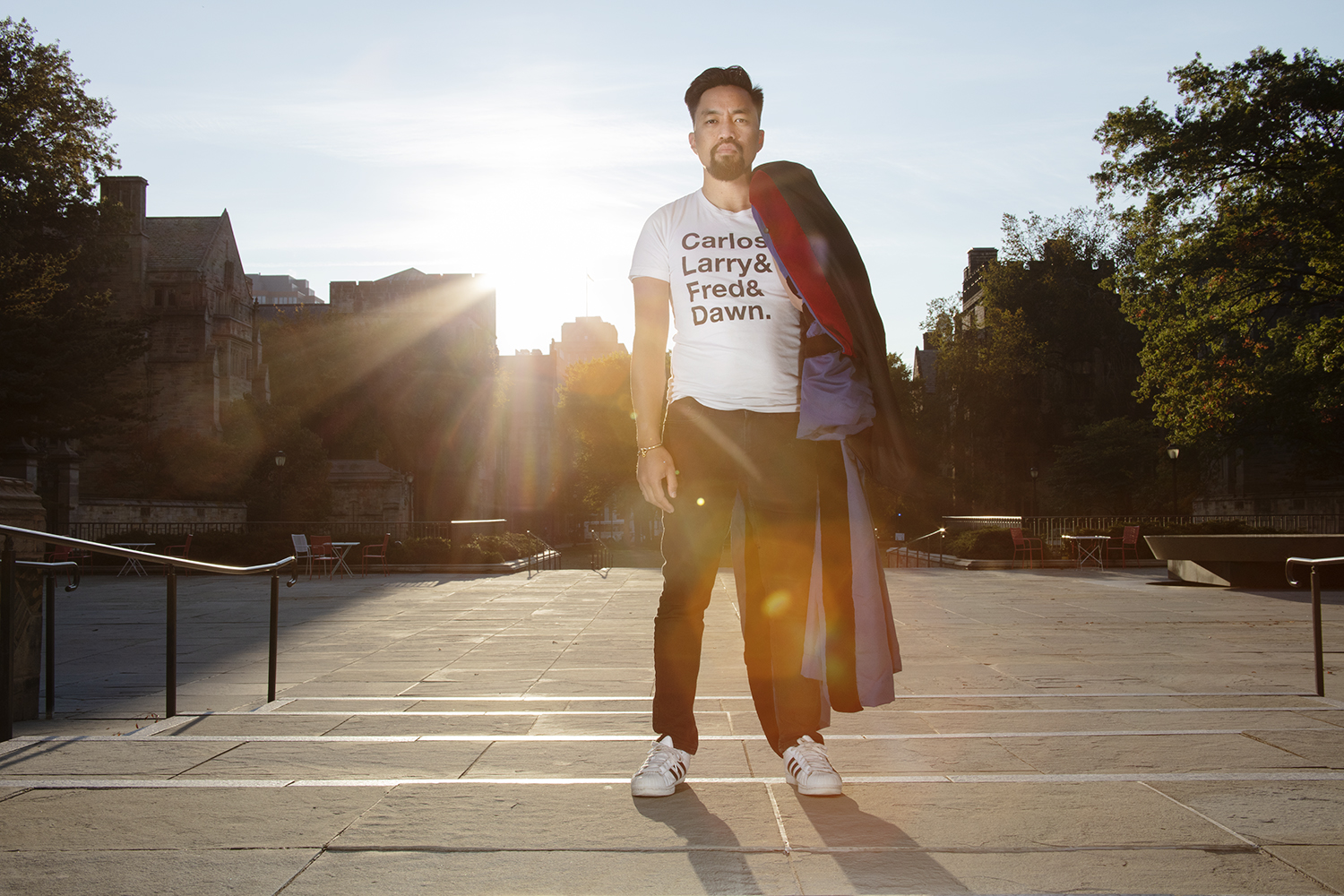
Courtesy of Gabrielle Muller
A photography exhibition showing the work of Gabrielle Muller DIV ’20 went on view earlier this year in the Divinity School’s Sarah Smith Gallery. The exhibition challenges notions of what it means to be a seminarian, highlights the presence of LGBTQ community members within the YDS and encourages the remembrance of the Sterling Divinity Quadrangle’s LGBTQ history.
This collection of photographs, taken in the past year, aims to center queer visibility, challenging the prominence of the narratives told by the pictures that usually decorate the gallery walls. A digital catalog of the photographs can be viewed virtually in the form of a downloadable PDF or mailable packets. The show will remain in the Sarah Smith Gallery through the end of the spring semester.
“I wanted this to open a space for an alternative, more authentic, visual narrative that includes and centers queer seminarians — one that is almost never explicitly told in religious spaces,” Muller said in an interview with the Yale Divinity School.
The exhibition aims to both highlight the presence of LGBTQ community members within the YDS and show how they have historically been an integral part of the YDS. For example, Muller focused on seminarians who have had their presence erased or diminished despite their accomplishments and gifts to the institution. Muller told the YDS that in underscoring these seminarians, she sought to “highlight concealments in institutional memory.”
This project was conceived when Muller began taking photographs of her friends last year through Yale School of Art classes. While taking these pictures, she was interested in “the way photography functions in communal spaces,” and how photographs have the power to shape narratives surrounding places.
As a result, Muller coordinated with DivOut — a fellowship of students dedicated to supporting the LGBTQ community members within the YDS — to organize photoshoots of YDS students. She began conceiving of the exhibition early last year.
Laura Snell DIV ’21 and JaQuan Beachem DIV ’21 helped Muller curate the show.
“The exhibition displays glimpses into the integrity and dignity of those photographed while combating inclinations to shrink or question the divinity of queer bodies,” Beachem and Snell wrote in an email to the News.
Because the show revolves around visibility, Muller said the show’s physical display formed an important component of the exhibition. She said that hanging the photographs on the gallery’s walls was part of a “performance element” built into the exhibit.
Due to the pandemic, interested viewers may be unable to view the show in person. Nevertheless, Muller hopes to convey a sense of the exhibition virtually through the downloadable PDF, which was created by Muller’s friend, artist and designer Mark Price. The PDF includes all the show’s photos, along with additional images and installation shots.
Price also designed the show’s mailable packets, which allow viewers to interact materially with the show as they include zines and postcards with pictures from the show.
“We’re already in Christian practice, so the goal is to assert and bear witness to our existence,” said Snell. “Inclusion implies permission to be, and we don’t need anyone’s permission. We’re already here.”
On July 17, Muller released her first feature film, titled Crossroads of America.
Annie Radillo | annie.radillo@yale.edu







